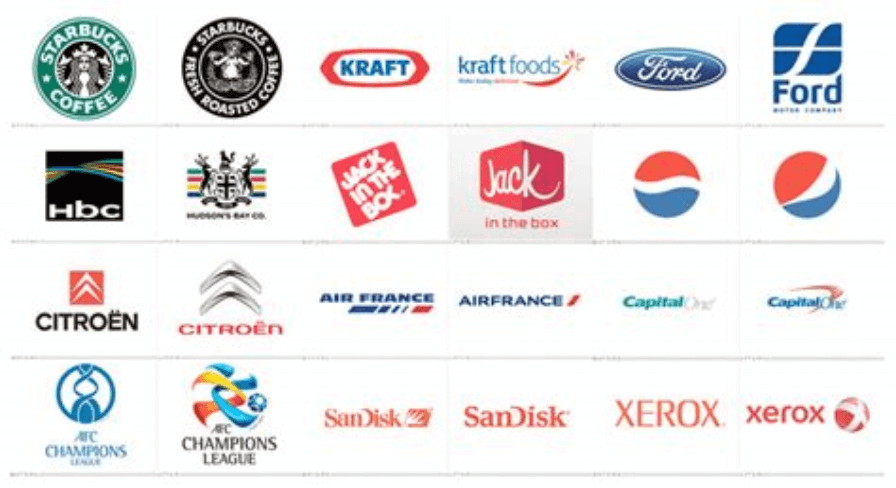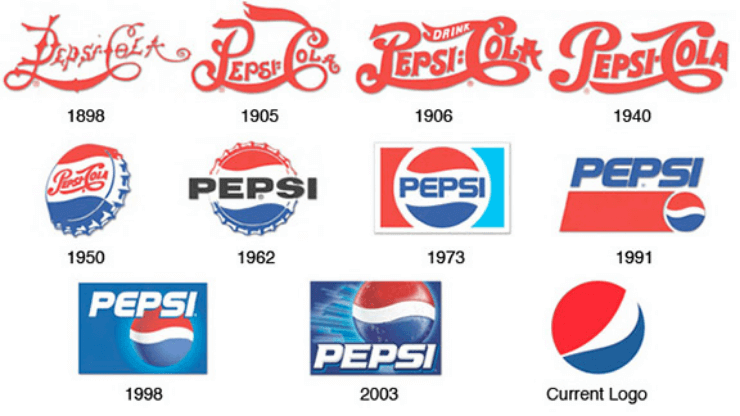
4 min read
Do you remember #thedressillusion that divided the internet back in February 2015? It seemed like no two persons from the same group could agree on one simple thing: the color of a dress captured in a photograph. Some opted for white and gold while others swore it was black and blue. Eventually, science weighed in and settled the debate: the dress was indeed black and blue, and was perceived differently due to the overexposure and poor white balance in the photograph.
Ultimately, the dress illusion is a perceptual issue. While there are no large stakes when it comes to getting the color of a dress right, the same cannot be said about business issues. And many organizations are torn over a similarly divisive question: Do I need a rebrand?
Depending on who you ask, you might identify different perceptions. Your executive team might not understand the business value or branding while product teams have other priorities in mind. Not to mention that your marketing department has become so invested in the current branding identity that they cannot imagine it differently. However, your goal here is to differentiate facts from perceptions and determine whether you really need to rebrand.
To settle the debate, we prepared a set of questions to help you determine if rebranding is absolutely necessary for your organization, or is it more like a nice-to-have initiative.
Read the Signs: How to Recognize When it’s Time to Rebrand
- Your Brand Story Has Become IrrelevantDo you remember the “Why?” that is supposed to prompt your core business message? It’s the statement that sets you apart from the competition and sheds light on the brand’s purpose.But does this “Why” still keep you going? Perhaps you have since identified other gaps in the market and you are well-positioned to address them. Don’t be afraid to pivot and adapt if you think your brand has evolved from its initial purpose and could take on other opportunities in the market. However, don’t take the plunge unless your product offering is ready to deliver on the promise of your brand story — successfully.
- You Have Outgrown Your Brand ManifestoYour core audience is central to your brand manifesto. What they do and believe in should be reflected in your mission as well. Otherwise, they might not identify with your brand and buy from the competition instead.Knowing your audience and staying on top of consumer trends helps you communicate effectively the value you deliver to consumers. Take the fashion industry, for example. Gone are the days when shoppers would consume fast fashion without considering its impact on the environment or the workforce. If your brand still abides by the fast fashion business model, you need to be prepared to justify that within your brand identity. But if your brand has evolved with the industry, perhaps it’s high time to let it show and rebrand accordingly.
- You Need a Competitive EdgeThe whole purpose of branding is to help you stand out from the competition. But what happens when there’s a fine line between you and your competitors? You need to rebrand.Conduct a market analysis to determine where you stand among your competitors and identify the elements that prevent you from really leaving your mark. If you spot obvious similarities in terms of logo or color palette, try to make a strong visual statement to set yourself apart. And remember, just because another brand opted for a brand element change, it does not mean that you need to do it too. Change needs to come from within and has one purpose only: to reclaim your space and help you stand out.
- Your Target Audience Has ChangedMaybe you want to reconnect with your target audience or reach a new one — a rebranding initiative is your best bet to achieve this. Perhaps the consumers you target have grown older or you want to expand and appeal to the next generation. Or you find that the target audience is too big, too small, or actually has no buying power to drive ROI to your business.Working with a dynamic audience only adds to the complexity of defining your target audience. But your goal is to cater to the ever-changing needs of the customer and turn their demands into opportunities. So think of creative ways to market your product according to the demands of your target audience and make sure they are reflected in your logo, brand communication, and advertisements.
- Your Brand Elements Are ObsoleteImage is everything in branding. That’s why you need to keep all your visual assets up-to-date in order to help your audience understand that you’re one with the times.At this point, your logo and brand typography should reflect your current brand identity and deliver on the promise you make to your target audience. Not to mention that it should be eye-catching and have the best resolution. However, you should not neglect the formatting considerations that help you seamlessly share your visual assets across channels and touchpoints. Working with the right tools can help you simplify this process to achieve a consistent look across the board.

Source: image
Example: Successful Business Re-brand
Rebrand for Success
You don’t just want to rebrand. You want to rebrand better. Here are some top considerations you should have in mind as you assemble your rebranding efforts.
1.Rebranding is believing
Make sure everyone on your team sees the value in your rebranding initiative. If you still hear “Why do we need to rebrand?” from your team members, make sure you set the record straight and align everyone to the same goal. This way, you avoid fruitless arguments along the way.
2.Go beyond the rebranding signs
Once you’ve read the signs, don’t jump straight to the rebranding process. Spend time and identify why you are rebranding in the first place and make sure this explanation will inform all incoming steps in the process.
3.Rebrand by the book
A rebrand is more than just an image refresh. All branding efforts require comprehensive tactics and processes that are tied up nicely in a unifying whole. A simple logo change, for example, requires a thorough analysis of all branding materials according to best practices, so that you also get the best results.
4.Learn by example
Do you remember Gap’s logo redesign? That’s one example of rebranding gone wrong that ultimately did more harm than good. But there are countless other examples from companies that need a rebrand you could study and use as guidance in your rebranding efforts.
5.Don’t do it alone
Especially since there are a lot of tools you could use in order to make the rebranding process as painless as possible. Achieving brand consistency at scale has never been this easy.

Source: image
Example: Pepsi brand evolutionary
Prepare for Rebranding as Usual
Rebranding is an inevitable process in the life of a business. Your business will evolve and expand in time, so it’s only natural that your image should keep up with the changes. Whether you aim for a partial change or a total do-over, it is crucial to communicate these changes to your target audiences. Otherwise, you might lose brand equity and alienate loyal customers.
Your rebranding strategy should be thoroughly planned in order to make the transition as seamless as possible for your target audience. If you prepare consistently and anticipate potential questions or concerns, you are set for a smooth rebranding process.
The Xara branding hub
Whether you want to grasp the basics of branding for your new business, want to work on your brand strategy, are stuck with your brand visuals or want to find branding tips on how to grow your business, check out:
- Foundations — Learn the basics of branding
- Strategy — Plan your brand strategy
- Build Story — Build a brand 1: Your brand story
- Build Visuals — Build a brand 2: Your brand visuals
- Management — Control your brand: Brand management
- Growth — Grow your brand: Brand marketing
- Improvement — Improve your brand: The rebrand
- Measurement — Measure your brand: Brand analytics and KPIs
